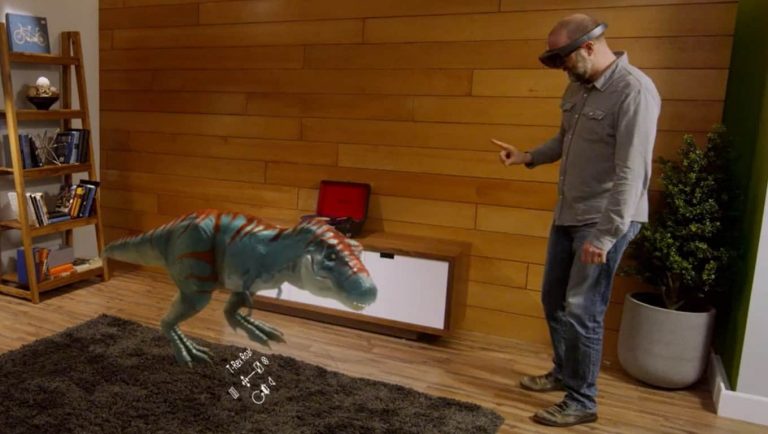Microsoft believes its holographic headgear HoloLens is the future of computing, and many who have tried it are inclined to agree. But what does the future look like, from the inside? The Verge has gotten answer, with some detailed looks at what the HoloLens are made of, literally.
As a reminder, the HoloLens is a completely self-contained – meaning it doesn’t need a connection, wired or not, with any other machine to function completely, unlike VR stuff like the Oculus Rift – visor-slash-headband device that is able to project holograms into your immediate environment, which can range from a running clown, to a whole galaxy, or even more mundane things like a TV screen. It is essentially a Windows 10 computer on your head, and the close-up shots by The Verge show just how much work has been put into shrinking one to that size and fit in all of the components.
Among the notable parts of HoloLens are a miniature Kinect camera at the front for depth-sensing, a pair of “see-through holographic lens” or ‘waveguides’ in Microsoft lingo for beaming holograms into your eyes, and its oddly-shaped and surprisingly small motherboard where all the processing components are crammed, including the new Holographic Processing Unit (HPU). The HPU, in particular, handles all the real-time sensors data, and is expected by Microsoft to be the as common as the CPU and GPU in the future. The HoloLens’ spatial sound feature, as well as its triplets of batteries also gets a mention.
Overall, the post presents a fascinating look at the insides of Microsoft HoloLens, one of the most exciting piece of technology currently. The timing is just nice, in line with Microsoft’s recent shipping of the Developer’s Edition of HoloLens to eligible parties. To experience the marvel of HoloLens, you can also grab one for the sweet adopter price of $3000 apiece, or go down to get a new kitchen at Lowe’s. This is, however, just the first generation, and we can’t help but be excited for what’s coming from Microsoft in the future


